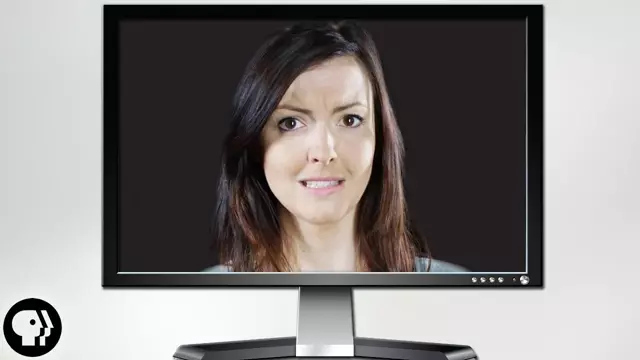2015-08-21
[public] 58.3K views, 2.53K likes, 23.0 dislikes audio only
4KMy Twitter https://twitter.com/nessyhill | Instagram https://instagram.com/nessyhill
Subscribe to BrainCraft! http://ow.ly/rt5IE
BrainCraft is written and hosted by Vanessa Hill for PBS Digital Studios. Talking psychology, neuroscience & why we act the way we do.
Sound design: Joel Werner (http://joelwerner.com)
Production Assistant: Ella Colley
Keep in touch!
Snapchat: nessyhill
Twitter https://twitter.com/nessyhill
Instagram https://instagram.com/nessyhill
Tumblr http://braincraft.tumblr.com
Facebook https://www.facebook.com/Braincraft
More BrainCraft!
Can You Solve This Dilemma? /youtube/video/9xHKxrc0PHg
Why Do We Feel Lonely? /youtube/video/scfV7G54KY0
REFERENCES
Inkblot test with A.I. (note this is self-published)
https://medium.com/@hint_fm/move-over-turing-23b26027f049
Rorschach Test
Rorschach, H., & Morgenthaler, W. (1921). Rorschach psychodiagnostik. Ernst Bircher. Bern. T
The images are available on Wikipedia: https://en.wikipedia.org/wiki/Rorschach_test
Lilienfeld, S. O., Wood, J. M., & Garb, H. N. (2001). What's wrong with this picture?(critique of projective tests). Articles by James M. Wood, Ph. D., 9. http://digitalcommons.utep.edu/cgi/viewcontent.cgi?article=1008&context=james_wood
Hunsley, J., & Bailey, J. M. (1999). The clinical utility of the Rorschach: Unfulfilled promises and an uncertain future. Psychological Assessment, 11(3), 266. http://ikpp.si/att/133/Hunsley-Bailey%20Clinical%20utility%20of%20Rorschach%20Psych%20Assessmen.pdf
Wood, James M., et al. "The Rorschach test in clinical diagnosis: A critical review, with a backward look at Garfield(1947)." Journal of Clinical Psychology56.3 (2000): 395-430. http://moemesto.ru/rorschach_club/file/895917/download/56-3-2000-5%252520Rorschahiana4.pdf
Turing Test
Original Paper:
Turing, A. M. (1950). Computing machinery and intelligence. Mind, 433-460. http://www.csee.umbc.edu/courses/471/papers/turing.pdf
Saygin, A. P., Cicekli, I., & Akman, V. (2003). Turing test: 50 years later. In The Turing Test (pp. 23-78). Springer Netherlands. http://cogprints.org/1925/2/tt50.ps
Personality
Glossary of Psychological Terms via American Psychological Association, from Gerrig, R. J. & Zimbardo, P. G. (2002). Psychology and life. Pearson Higher Education AU. http://www.apa.org/research/action/glossary.aspx?tab=16
Digman, J. M. (1990). Personality structure: Emergence of the five-factor model. Annual review of psychology, 41(1), 417-440. http://orientation.uchicagolawandecon.org/readings/Digman%20on%20Five%20Factor%20Model.pdf
Allik, J., Realo, A., & McCrae, R. R. (2013). Universality of the five-factor model of personality. http://www.psych.ut.ee/~jyri/en/Personality_universals_17-12-2010.pdf
Robot Evolution
Vanderbilt University http://news.vanderbilt.edu/vanderbiltmagazine/robot-evolution/
Robots and Humans
Heather Knight:
How Humans Respond to Robots, Brookings Institute http://www.brookings.edu/research/reports2/2014/07/how-humans-respond-to-robots
Knight, H., Toscano, R., Stiehl, W. D., Chang, A., Wang, Y., & Breazeal, C. (2009, October). Real-time social touch gesture recognition for sensate robots. In Intelligent Robots and Systems, 2009. IROS 2009. IEEE/RSJ International Conference on (pp. 3715-3720). IEEE. http://dspace.mit.edu/openaccess-disseminate/1721.1/59473
Google patented building robots with personalities, Quartz: http://qz.com/373658/google-patented-building-robots-with-personalities/
IMAGES
Images used under a Creative Commons Attribution-Share Alike 3.0 Unported license
https://commons.wikimedia.org/wiki/File:Handlebar-moustache.svg
https://commons.wikimedia.org/wiki/File:Crane_Hook_-_Noun_project_4635.svg
https://commons.wikimedia.org/wiki/File:WikiProject_Scouting_fleur-de-lis_red.gif
https://commons.wikimedia.org/wiki/File:Cultuur_icoon.png
https://commons.wikimedia.org/wiki/File:Map_pin_icon.svg
Creative Commons Attribution-NonCommercial-NoDerivs 2.0 Generic
Flickr/Tzong-Lin Tsai https://www.flickr.com/photos/gwai/6040272659/
Creative Commons Attribution-ShareAlike 2.0 Generic
Flickr/Zach Copley https://www.flickr.com/photos/zcopley/2589700985/
Creative Commons Attribution-NonCommercial 2.0 Generic
Flickr/Daniel Incandela https://www.flickr.com/photos/incandopolis/5002819235/
Expat/MIT license
https://commons.wikimedia.org/wiki/File:Octicons-puzzle.svg
Public domain
https://commons.wikimedia.org/wiki/File:Munch_The_Scream_lithography.png
And from Swinburne University of Technology: https://youtu.be/UnQOoVpum_k
From University of Wyoming: https://youtu.be/Cyfyzl934Sg
From The Johns Hopkins University Applied Physics Laboratory: https://youtu.be/elZU29F4Bbc
From Berkeley Lab for Automation Science and Engineering: https://youtu.be/YiPq9t0tR3U
If you made it this far: http://gifrific.com/wp-content/uploads/2013/02/Sea-Turtle-High-Five.gif
/youtube/video/Q37HAVUqE-8?t=97
/youtube/video/Q37HAVUqE-8?t=151
/youtube/video/Q37HAVUqE-8?t=215

